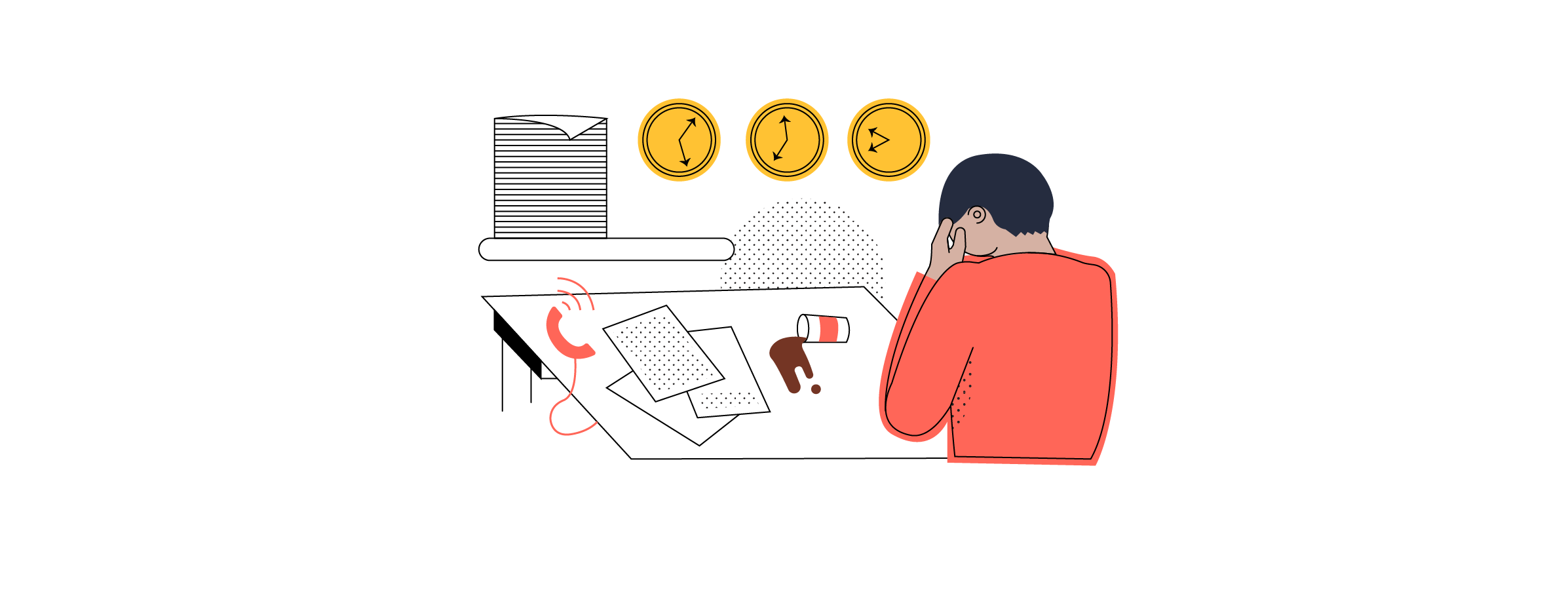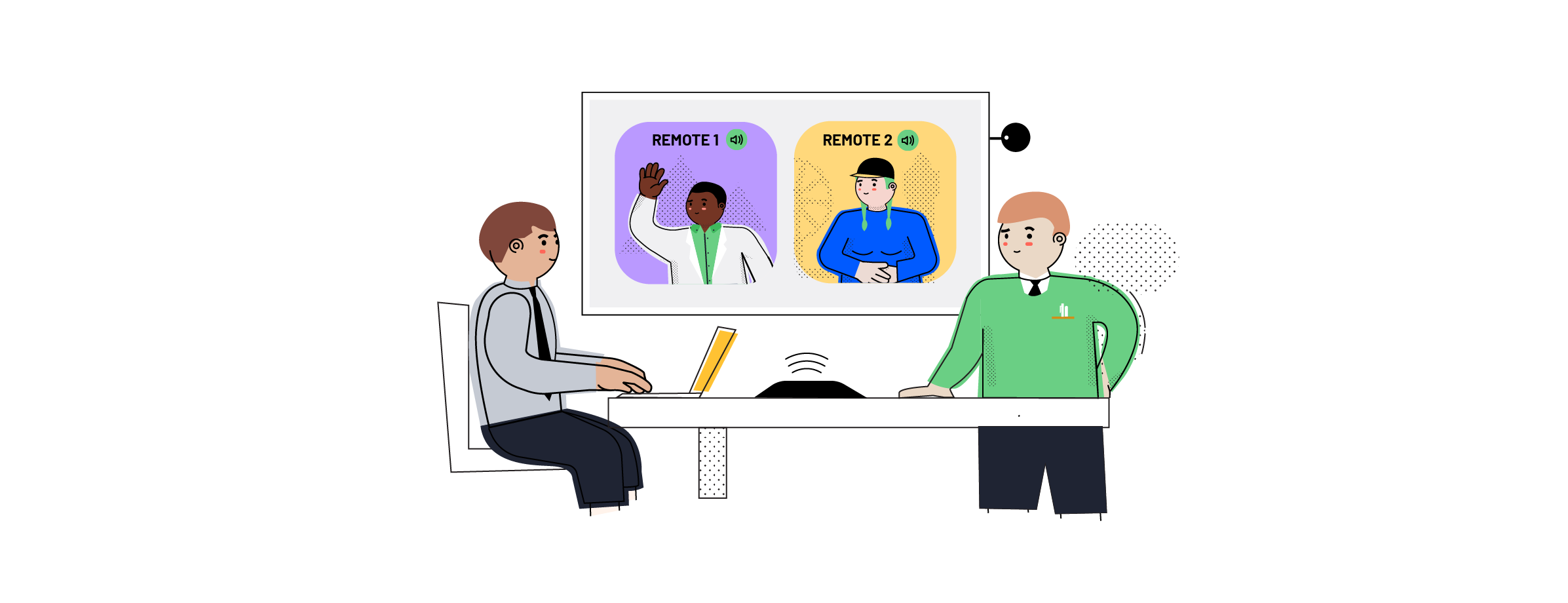Having permanently remote team members might be non-traditional, but it’s certainly on the rise. We go through the benefits as well as the struggles – and how Airtame taps into it
Building an effective remote team infrastructure

It might come as a surprise to some companies, but remote workers actually add a ton of value to a team. Furthermore, reports suggest that remote-friendly companies even have 25% less turnover than a more traditionally structured company.
Both at Airtame and further afield, remote work is more often than not structured within product or engineering teams. We’re not averse to thinking of such a policy for other departments, we just haven’t got there yet. Still, we’re proud to say that we have several remote workers as part of the Airtame team and due to that benefit from a more diversified workforce.
But not all companies think that way. Having remote workers can be intimidating because it requires employers to rethink management structures. And while it’s probably true that not all businesses find it advantageous to have a full-scale remote operation, building an effective remote team infrastructure does have major benefits that should be considered.

What is remote work?
There are essentially two types; permanently remote team members, versus workers that work remotely every once in a while. The definition of remote work stays the same, however, whatever the scale of the work policy. In this article, we define remote workers as those who work at least three days a week remotely.
Remote work is a situation where one or more employees mainly work from another location than the office and communicate by email, telephone, Slack, etc. rather than face-to-face. This means that a workplace has to adapt communication and management methods in order to stay in touch with remote workers and make sure they’re not left out of important conversations, and feel just as much a part of the team as those congregated in an office.
Another perk of remote work is that it allows employees to work outside of a traditional office space and be based in a different city or even a different country – or even just from home. It’s founded on the idea that work doesn’t have to be done in a specific work environment for things to get done properly.

The advantages of remote working
Flexibility. That’s really the main point worth mentioning. Most work done today is 100% digital, and that means we should be able to do it from wherever – yet that’s often not the case. Giving employees the possibility of doing their work from a location of their choosing will ensure a more enthusiastic workforce with a happier work-life balance.
Remote workers might even see this opportunity as a reward for doing a good job and thus feel more motivated to excel further.
Less turnover and fewer office costs are of course valuable perks as well, but we think it’s first and foremost about ensuring an employee’s wellbeing.
A few more pros – acquiring top, specialized talent in one location can be hard; it gives the company a more varied, international perspective; it can help sow the seeds for future business development – and opening new offices.
The downsides to remote working
On management’s part, remote working requires a lot of re-structuring. Not only that, remote working is mostly based on trust and in the faith that an employee gets the work done and structures their time appropriately to finish projects on time. Whether the employee needs a work permit or social security papers will fall upon management to figure out, for example.
If the trust and right means of communication aren’t in place, the remote workers will feel disengaged very quickly and management will not get the most out of that employee.
There’s also the strain and toll on the employee themselves. Even though remote working sounds like a bit of a dream scenario, in reality, it can be quite stressful because the employee might feel that they’re never ‘off’ or have to stay in touch at all times.
If no policies are in place to support remote workers, these employees by default can’t bring the same value to the table as their in-house colleagues.

Airtame’s remote infrastructure
Airtame currently has little less than 100 employees, five of them full-time remote workers. About one-third of the engineers work remotely several weeks each quarter, and several other teams enjoy the flexibility of semi-remote work throughout the year – although not as frequently as the engineering team.
For that to work, we have a couple of guidelines we try to follow. I conferred with Attila Sükösd, one of Airtame’s founders and semi-remote workers, on what those guidelines are.
“When hiring candidates (especially full-time remote workers), we put extra emphasis on communication as we’ve found that they need us to be more proactive for them to stay engaged,” Attila noted.
We also try to bring in people as much as possible for social events during the year, just as we onboard them on-site, so they can meet their co-workers in person and form a more personal relationship.
Attila continues: “Once the onboarding process is complete, we sync remote workers and the team up on a daily basis through standup sessions (a roll-call or daily scrum where everyone relays their projects and activities).”
How to establish a successful remote team infrastructure
First and foremost, being successful in this endeavor requires a lot of the individual remote worker, not just management itself. These are the two most important variables to factor in when setting up an effective remote infrastructure:
- Culture: Culture isn’t just about social events and in-person gatherings, it’s about a positive tone-of-voice across all channels and platforms. Remote workers should be encouraged to speak up, ask questions, and make themselves heard just as in-house employees should be encouraged to do the same and reach out to their remote colleagues. Prioritize frequent one-on-ones between the worker and their manager over video and include remote workers in all-hands sessions.
- Communication: Chat tools like Slack, Basecamp, and Favro ensure that communication is transparent and recorded, and we add in regular video conferencing. Beyond that, deadlines, check-ins, goals, and feedback will help create a stable foundation for the expected tasks. Oh, and don’t leave out remote people when important decisions are made. Everyone is equally part of the team, regardless of their location. Check out our guide to the must-have apps that make your business meetings run more smoothly.

Accommodate remote workers and get a more effective team
In a recent survey by TalentLMS, 88% answered that they would recommend a remote work career to others – and we’re all for it as well. You don’t have to go all the way and become GitHub where everyone works remotely, but supporting the right hires in what’s best for them will ultimately turn out to also be the best for your company.
Yes, there’s less traceability when you start allowing people to work remotely, and yes, you need to take some extra steps to assure you’re all aligned. In Attila’s words: “When you start trusting people to do a great job, regardless of where they’re sitting, you’ll find yourself having less of a need to “stay in control” and micromanage your team.”
Happier team = better work. It’s a win/win for everyone.
Did we pique your interest? Check out available jobs at Airtame!